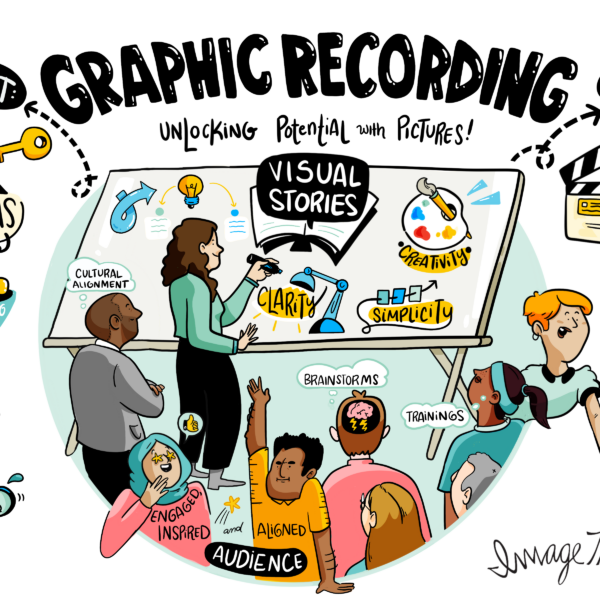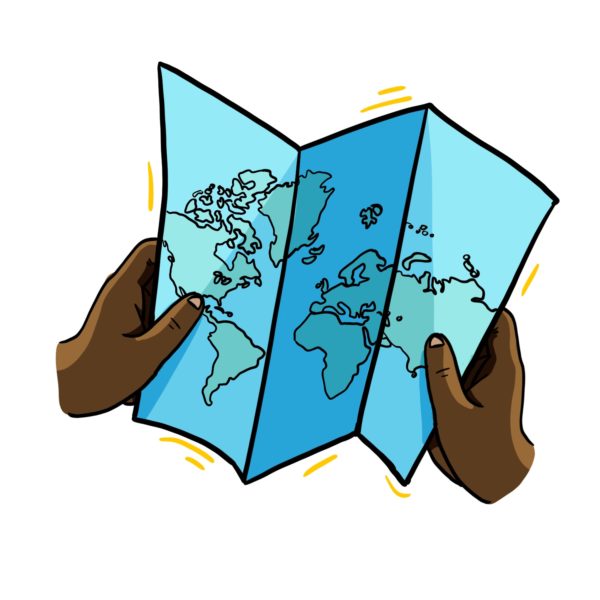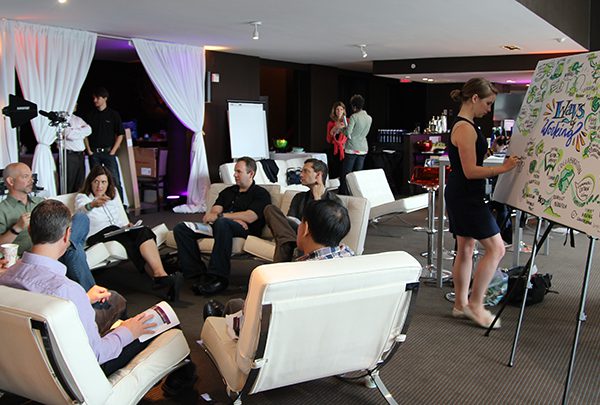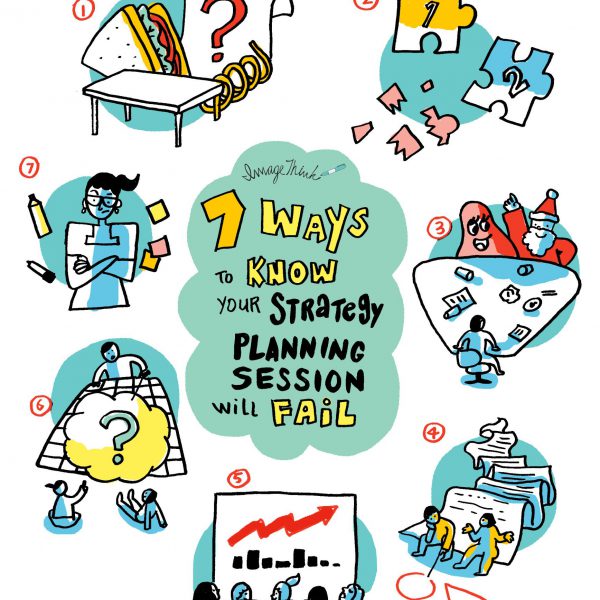
What happens when you bring together your best and brightest? In our experience supporting thousands of brainstorm and strategy sessions, either one of two things:
- You’ll leave the team meeting energized and ready to forge ahead together.
- You and your team could walk out feeling even more lost than when you started, with diverging goals, overloaded to-do lists, and no clear plan to make any of it happen.
After nearly 10 years of supporting strategy and brainstorm sessions for Fortune 50 companies and startups alike, we’ve seen plenty of examples of both outcomes. We like the first a whole lot better.
That’s why at ImageThink, we are committed to helping you leave your team meeting energized and ready to attack the next work week with renewed focus. The time you spend in team communication should lead to alignment, clarified strategy, and concrete next steps.
So if you’re tired of feeling more confused and overwhelmed after a meeting than when you walked in, read on– We’ll share a few simple but effective visual exercises and templates to structure your corporate meetings, prioritize projects, and break goals into achievable action items.
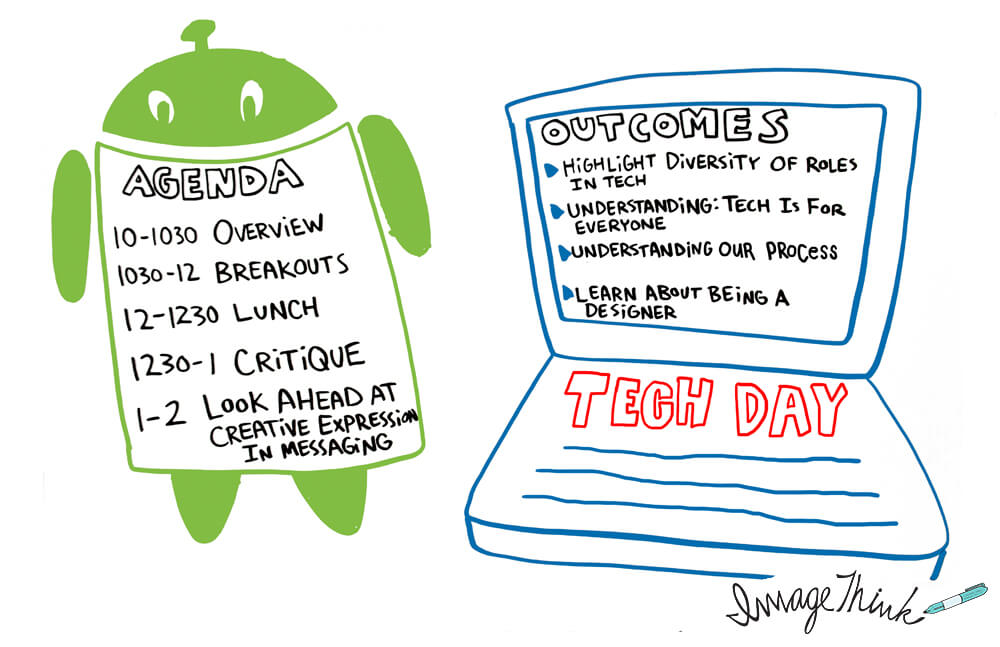
Tip 1: Picture Your Big Day
Defining tomorrow’s goals for your organization starts with clarifying the objectives of today.
During a team meeting have your graphic recorder or facilitator map out the agenda for your day on one side of a board or flip chart, and the outcomes you aim to accomplish on the other.
This sounds simple—and that’s because it is. But the impact on the effectiveness of your meeting will be tremendous. Your participants will appreciate being told what’s coming up, and the clear, visible outcomes will help keep conversation focused and useful.
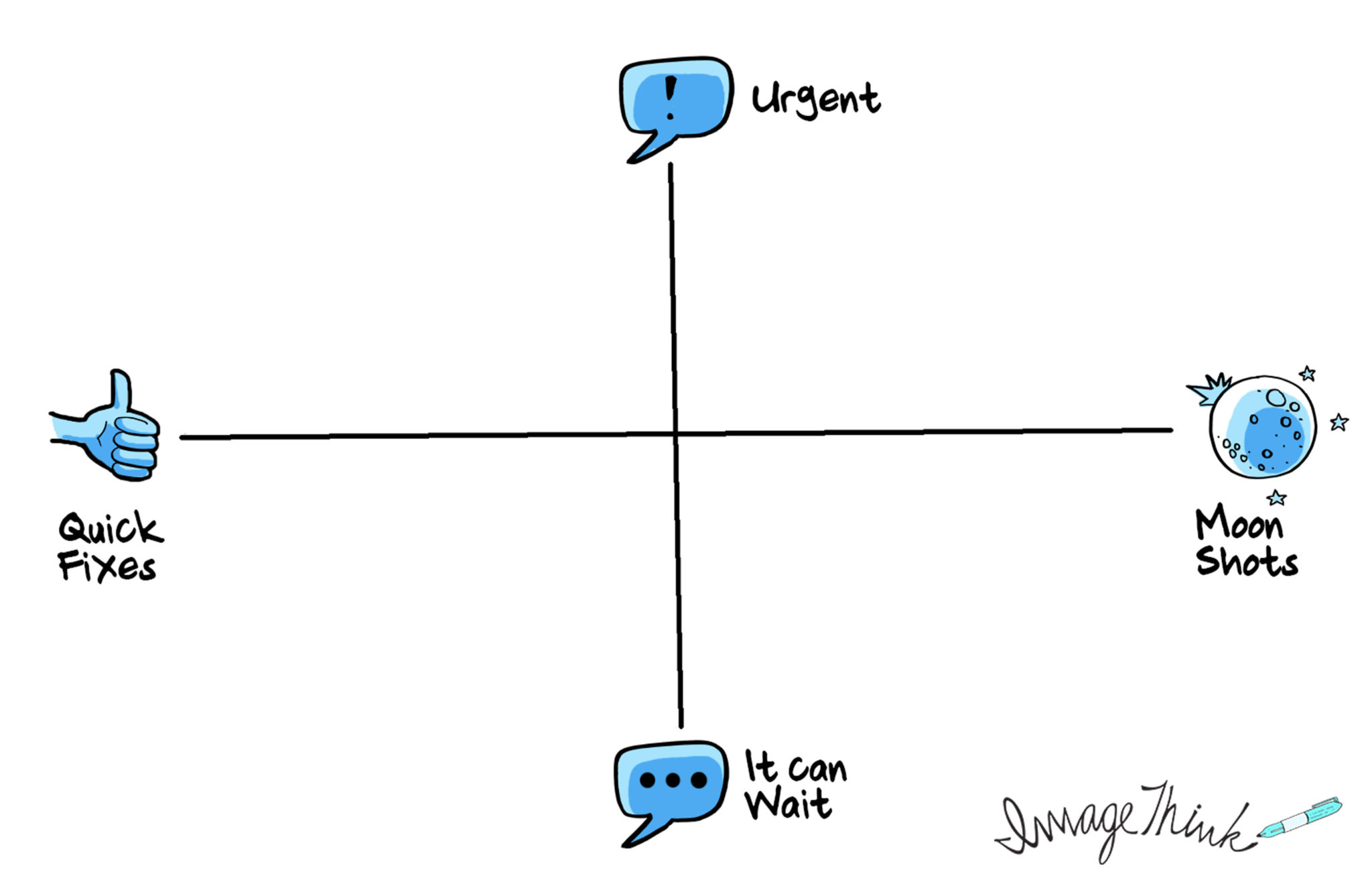
Tip 2: Plot It Out: Priority Graphing
Adapted from Draw Your Big Idea, by ImageThink co-founders Nora Herting and Heather Willems, this is a great exercise to gain collective clarity on what needs to get done and whether you have resources to accomplish it.
Whether you’re coming up with a new service, going through a period of entrepreneurial growth, or revisiting an idea that missed the mark, the to-do list can easily grow out of control. Post-its pile up, calendars fill up, and sometimes every task can seem like an urgent priority.
The great irony, though, is this: when everything is a priority, almost nothing will get done. We’ve seen it happen with our clients, and in our own team as well.
Taking a moment to step back and identify what the true priorities are—as well as the tasks necessary to make them happen—is a crucial first step towards meeting your goals.
In the team meeting, have your visual strategist scribe the a priority graph up on a board, and use sticky notes to chart your tasks along the axes. Seeing all your tasks laid out will help you align on what’s urgent, what can wait, and how to delegate responsibilities.
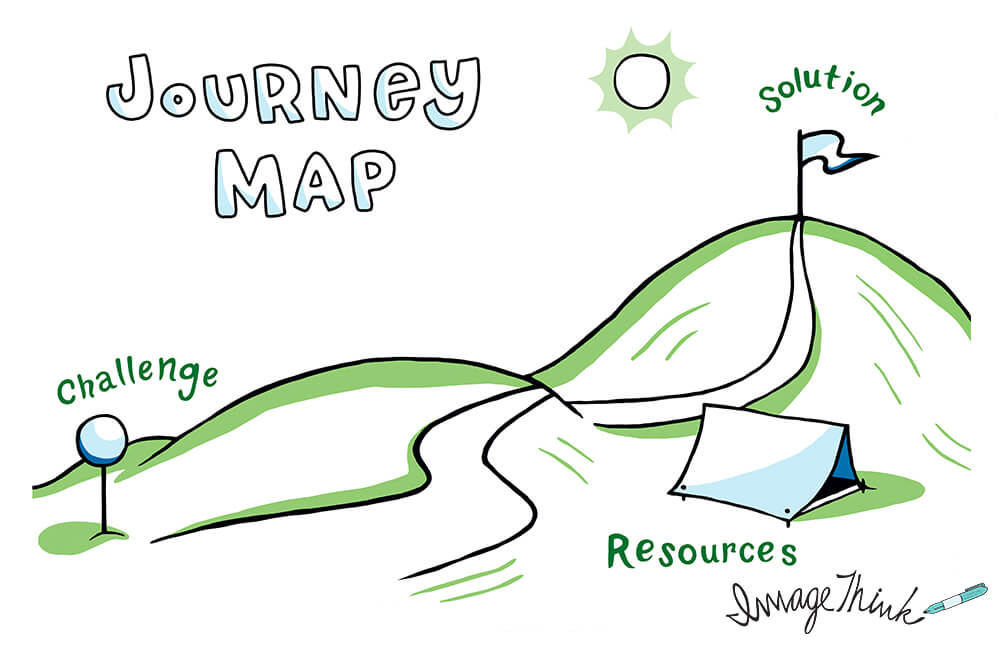
Tip 3: Milestone by Milestone: Charting Your Path
Another of the team meeting ideas from Draw Your Big Idea is one we use frequently when working with clients who are planning out group timelines.
When setting goals, it’s crucial that you not only clarify the goal itself, but also the specific milestones in the path towards its completion.
For each milestone, assign an owner from your team, and a completion date. In the path itself, identify the strengths and resources needed to move along it. This does a few things, all of them equally important:
Reduces Intimidation
Even with an entire team at your disposal, your aspirations can seem a little daunting. Breaking them into pieces reveals how possible they can be. You’ll realize that you don’t have to move an entire mountain all at once—you and your team can do it together, stone by stone.
Finds Actionable Tasks
Maybe you’re not intimidated at all—perhaps your company has identified where it wants to go, and everyone is more than excited to go there together. But without a step by step action plan, it’s hard to stay organized or assign individual owners.
Creates A Sense of Purpose
Breaking a goal into discrete actions allows your team to see how each daily task contributes to a larger purpose. It also allows you to track your progress, find a sense of accomplishment, and reduce burnout by making it clear that your work means something.
There’s more where that came from!
Want to learn more secrets to successful strategy sessions and efficient meetings? Visit our homepage to download a PDF tip sheet or get in touch with our account manager to learn how we can tailor solutions to your unique challenges.
